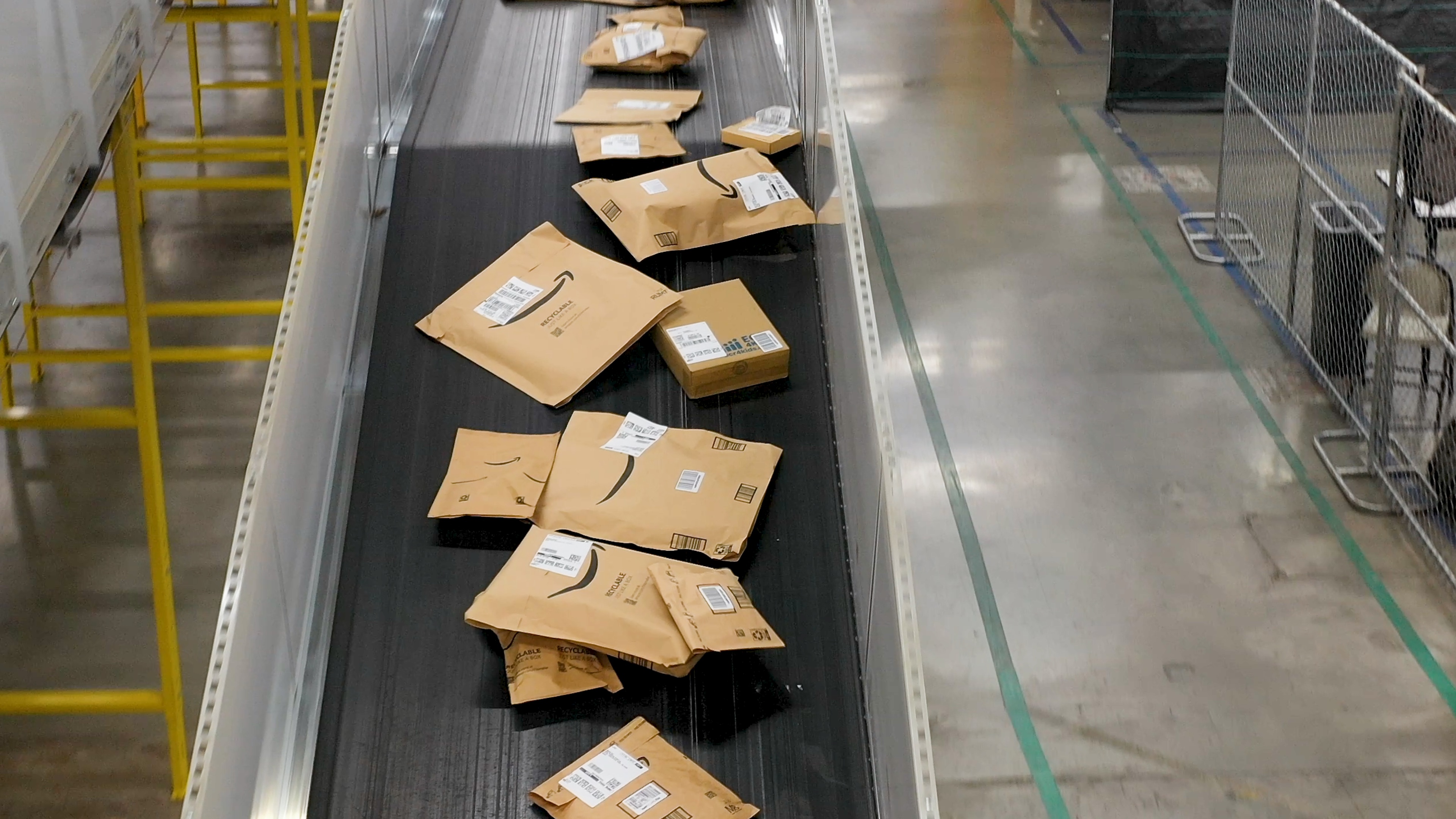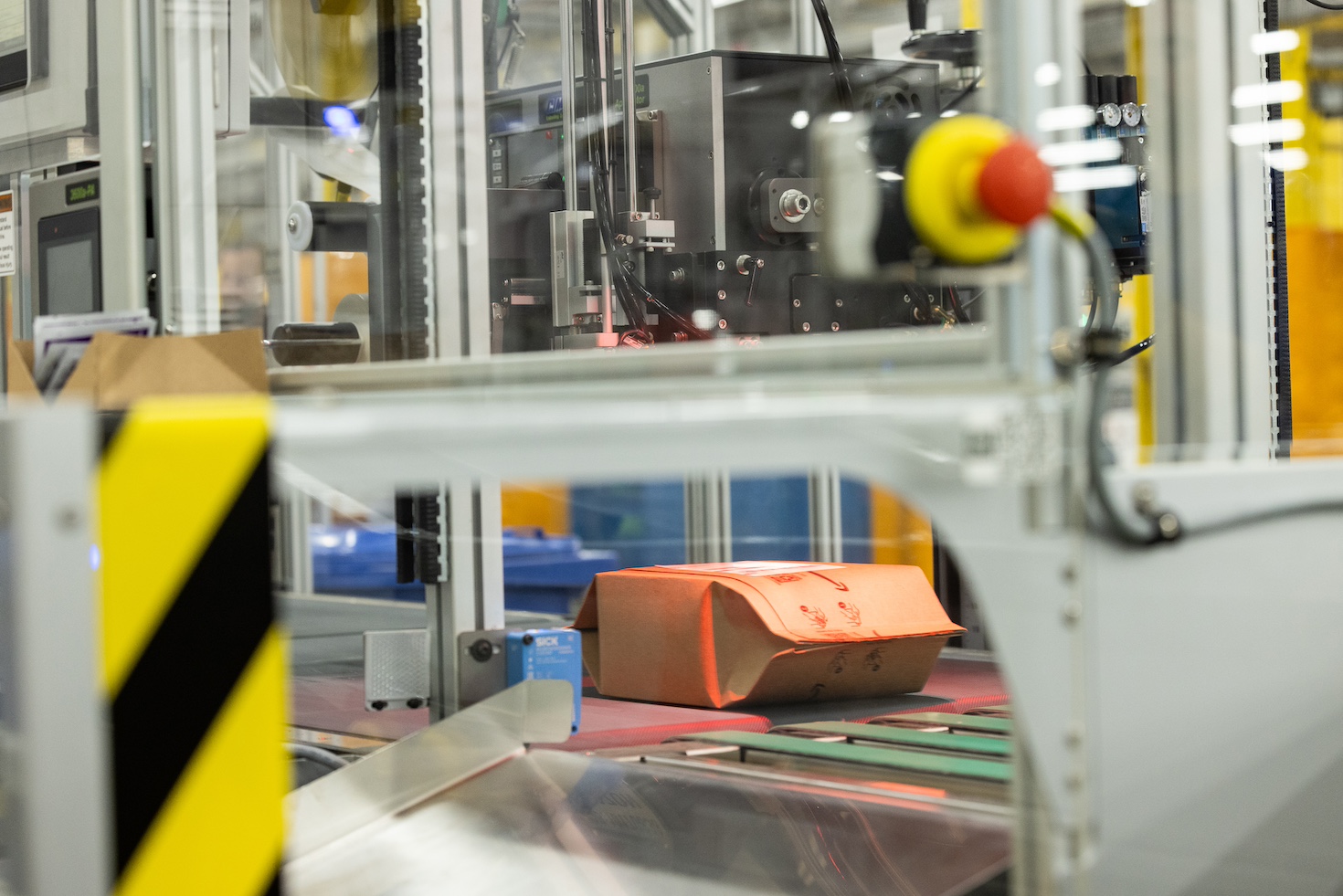Over the past decade, Amazon trimmed almost 2 million tons of packaging from the boxes it uses to deliver items and in its grocery stores — a stat it touts in its most recent sustainability progress report, issued in summer 2023.
Those measures reduced the average weight of packages by 41 percent, the company reported.
Amazon’s latest ambition: eliminate extra packaging whenever possible. When a layer of protection is required, it has vowed to replace plastic with recyclable, paper-based alternatives. Amazon has already cut 37,150 tons of plastic packaging since 2020. It still uses 85,916 tons of single-use plastic annually, as of 2022.
“I’ve spent a career in both plastics and paper,” said Pat Lindner, vice president of mechatronics and sustainable packaging at Amazon. “I’ve run both businesses, I’ve been doing innovation on both sides. They both have their attributes. But I think when it comes to circular economy, plastics just can’t stack up, because they’re made from fossil fuels.”

Getting rid of unnecessary packaging
Amazon’s first priority for packaging is to get rid of any that isn’t necessary. A program to ship items in their original containers accounted for 11 percent of all packages shipped in the U.S. and Canada in 2022; as of early February, that option is available to Amazon sellers using the company’s services for fulfilling orders, Lindner said.
Amazon uses machine learning software to identify items that qualify, and it also worked directly with some Amazon merchants to encourage product packaging redesigns so more items could be included.
The company has already reduced its cardboard waste by 7 to 10 percent annually, or about 60,000 tons, according to a December update.
A systemwide effort to replace plastic with paper
Amazon has also ramped up efforts to cut single-use plastic and switch to paper-based alternatives. Last fall, it retrofitted machines at its fulfillment center in Ohio to eliminate plastic mailers and replace them with ones made from water-resistant, flexible paper that is curbside-recyclable.
The upgrade required hours not days, Lindner said, enabling the changes to be made on the fly. Ohio was picked for the updates because it was already highly automated and because it serves both the Northeast and Midwest, which will give Amazon a broader test environment, he said.
Two developments that made that switch possible:
- The addition of built-in sensors and machine learning software that can predict the correct size of paper packages for clothes, kitchen supplies and other items that have typically shipped in plastic mailers.
- The development of water-resistant paper that is flexible enough to be stretched into the appropriate shape and that can be closed with heat-sealing technology.
Amazon declined to discuss the cost of these changes, but Lindner said they should eventually cut expenses as the systems are added across North America in coming months. “To eliminate waste, eliminate packaging to move to curbside-recyclable, that’s worth some investment,” he said.

Boxes that fit the contents
Amazon also upgraded another machine in the facility that “rightsizes” cardboard boxes so they conform to the shape of items they are used to ship. That’s important for eliminating the plastic “pillows” that keep things from being damaged when bouncing around in boxes that are too big.
Amazon invested in CMC Machinery in October 2021 through its $2 billion Climate Pledge Fund. CMC makes equipment for customizing box sizes.
In Ohio, the two companies collaborated to expand the box shapes the system can produce and to make it capable of handling lightweight, curbside-recyclable corrugate. The machine is capable of creating made-to-size boxes for half the items shipped by Amazon, the company said when announcing the retrofit.
The machine upgrades in Ohio were born of experiments launched several years ago in Amazon’s innovation center in Washington state.

Engineers, developers and a new type of paper
Here are other factors companies considering similar packaging overhauls should consider:
- It will take a multidisciplinary team. The Amazon initiative included hardware engineers, process and automation experts, artificial intelligence experts, software developers and materials specialists.
- Paper isn’t plastic. New paper suppliers were required to create a material that doesn’t degrade when it gets wet and that is puncture-resistant. This will take materials scientists and chemists. “Hundreds” of alternatives were considered, Lindner said.
- Consider the maintenance and downtime implications. New technology means new routines and new procedures to make sure equipment remains running smoothly.
- There are weight restrictions. The changes Amazon made in Ohio are applicable for items weighing less than five pounds (for the mailers) and less than 10 pounds (for the custom boxes).
- Seek customer feedback. The new packages include QR codes that offer additional information. Amazon will monitor data to gauge how the changes affect damage complaints and customer satisfaction. Those insights will guide when the technology will be scaled, Lindner said.
A step in the right direction
Amazon is being followed by other shippers concerned with cutting emissions, regulations in Europe and rules from some U.S. states that fine companies for distributing single-use plastics, according to packaging and circular economy experts.
There’s also a lack of infrastructure for recycling plastic, said Paul Foulkes-Arellano, founder of Circuthon Consulting and co-author of a book about materials and sustainability. “No country has robust recycling for flexible plastics. Recycling of flexible paper is ubiquitous in major economies.”
The extent to which Amazon can source its paper sustainably, using sources that are either recycled or certified as deforestation-free, will be important, said Catherine Weetman, director for Rethink Global, a circular economy advisory firm. “I feel there is a danger in getting distracted in looking for the ‘perfect packaging materials’ when Amazon could have a much bigger impact by creating circulation systems for the packaging itself,” she said.
“Given the scale, reach and innovation already in Amazon’s logistics systems, surely it is best-placed to help make reuse the ‘new normal’ for parcel deliveries?” she said.
Source link
